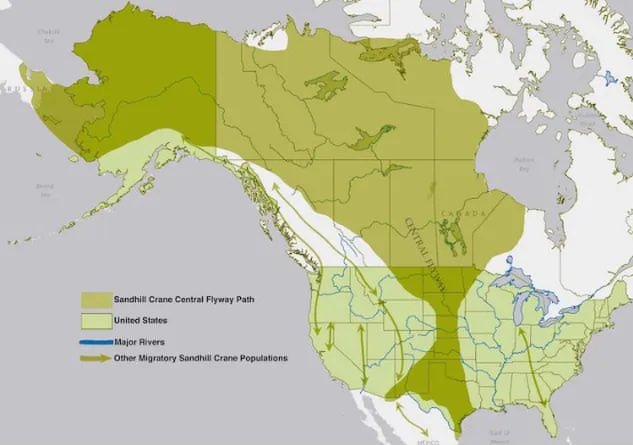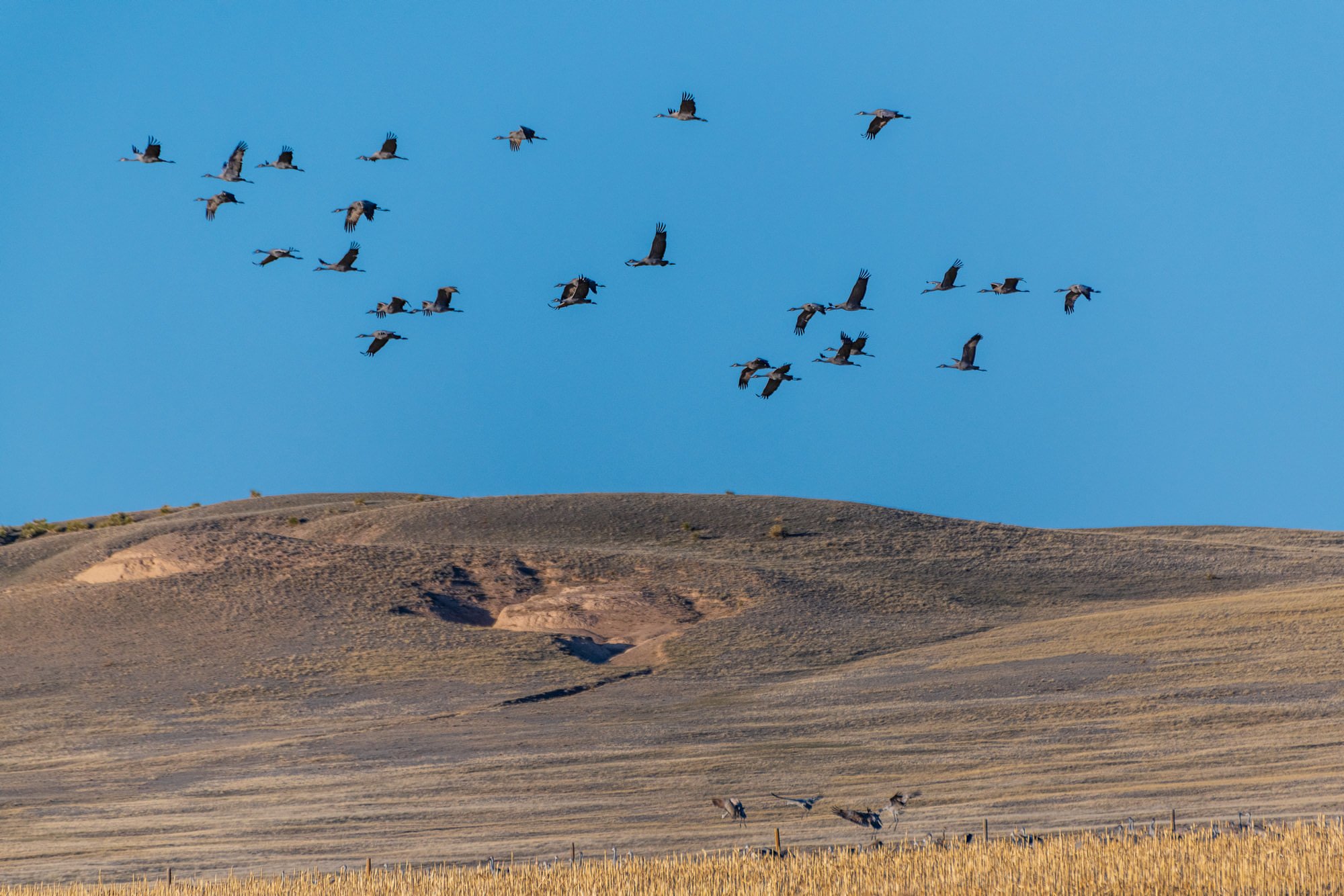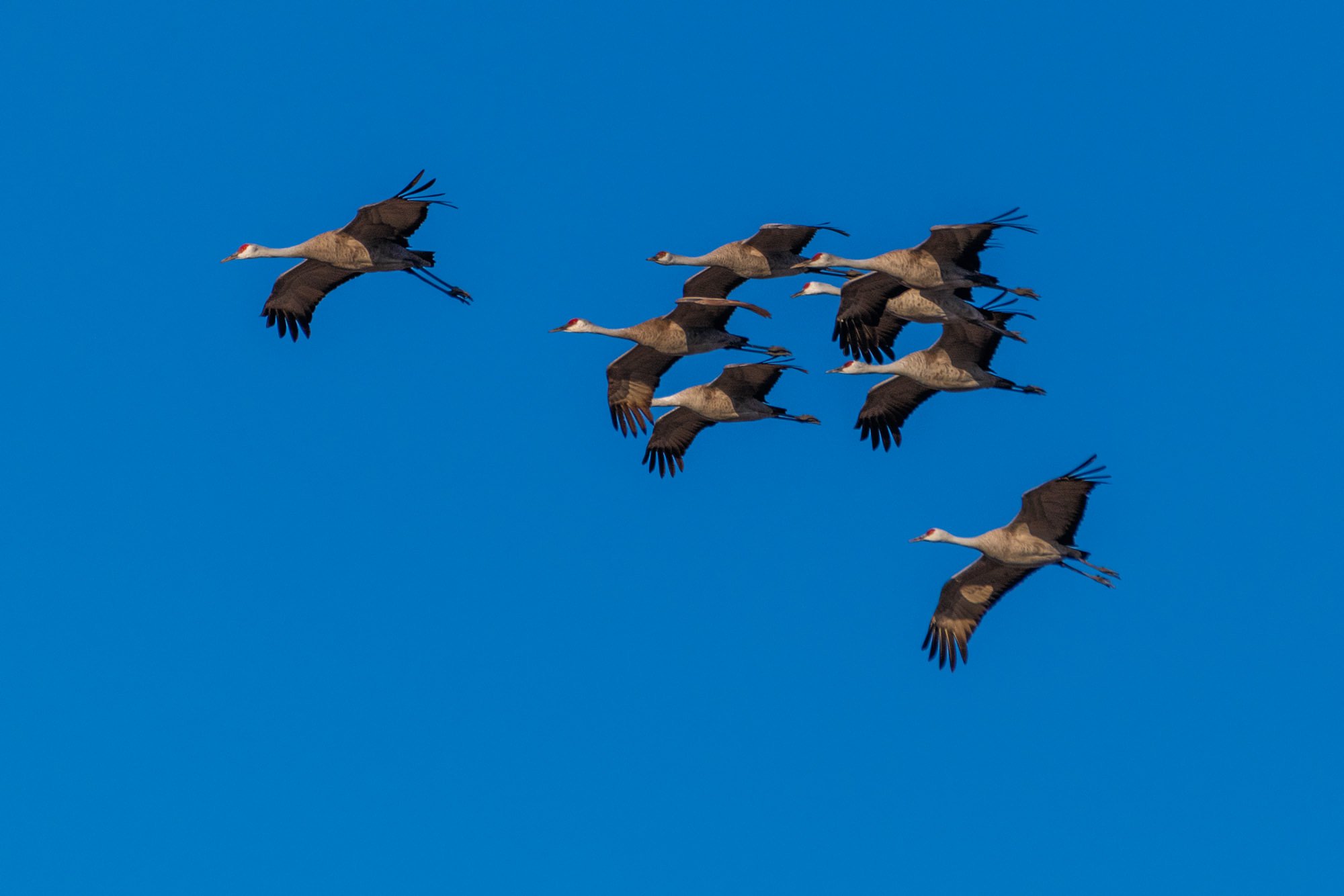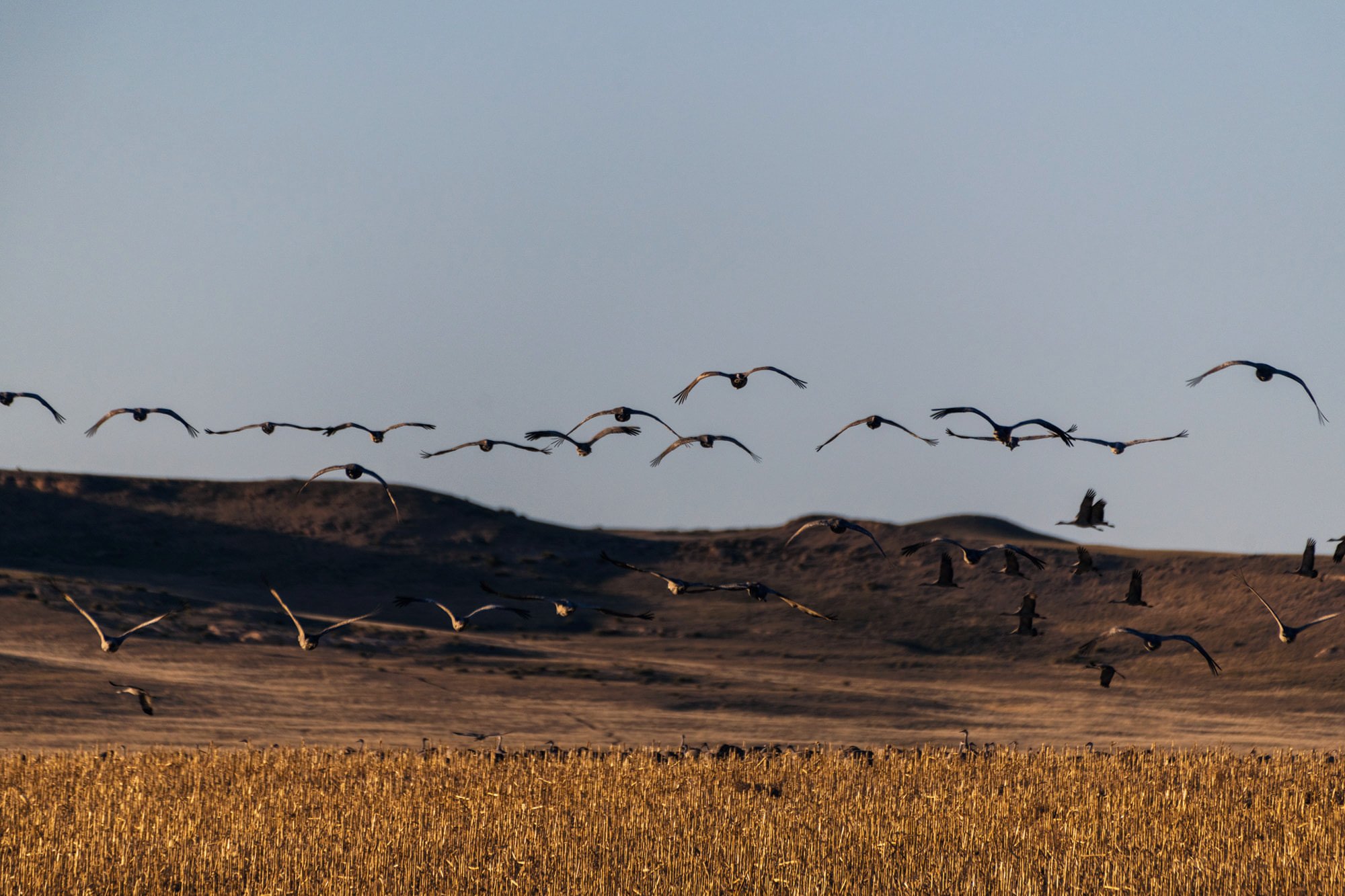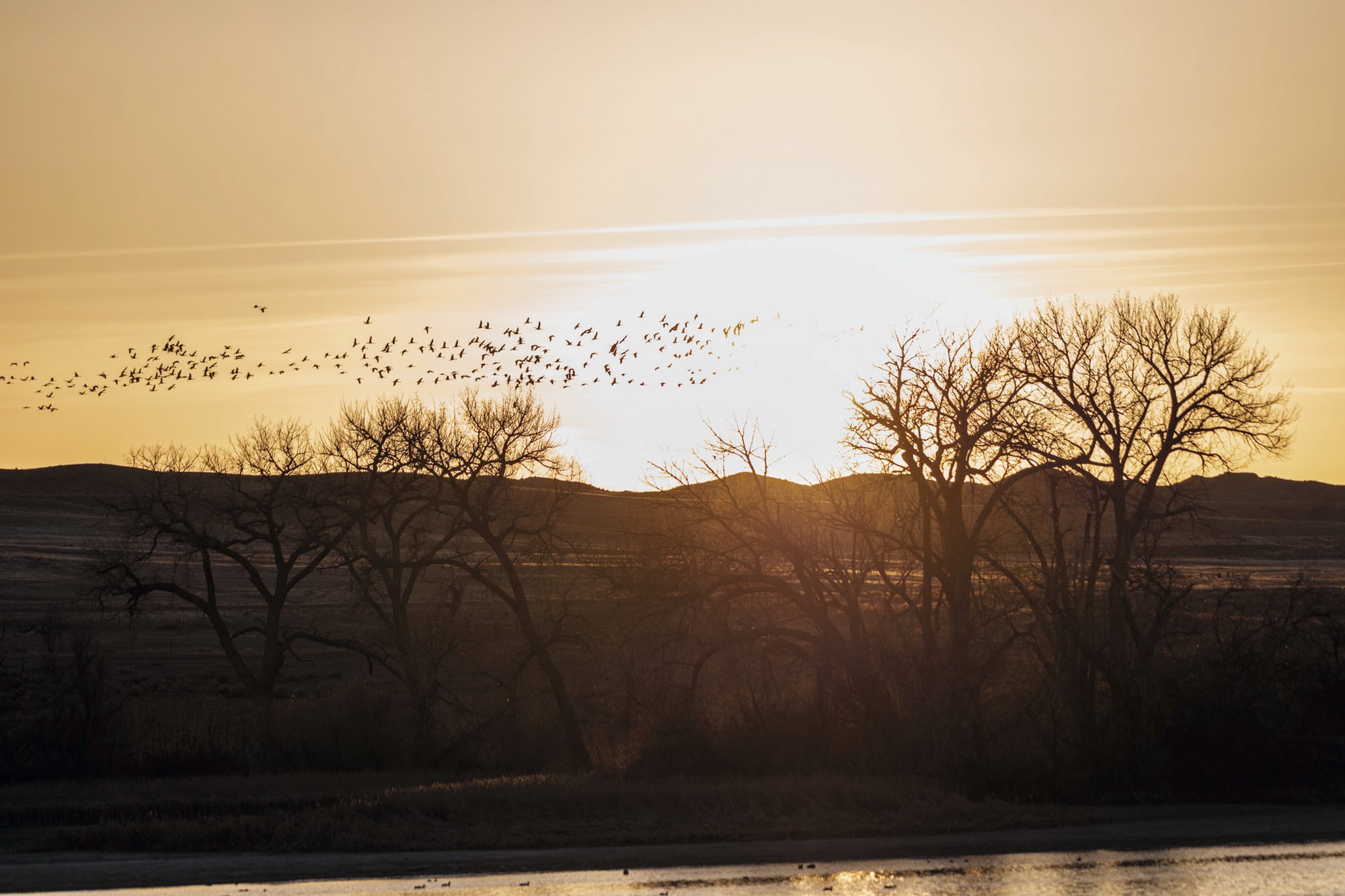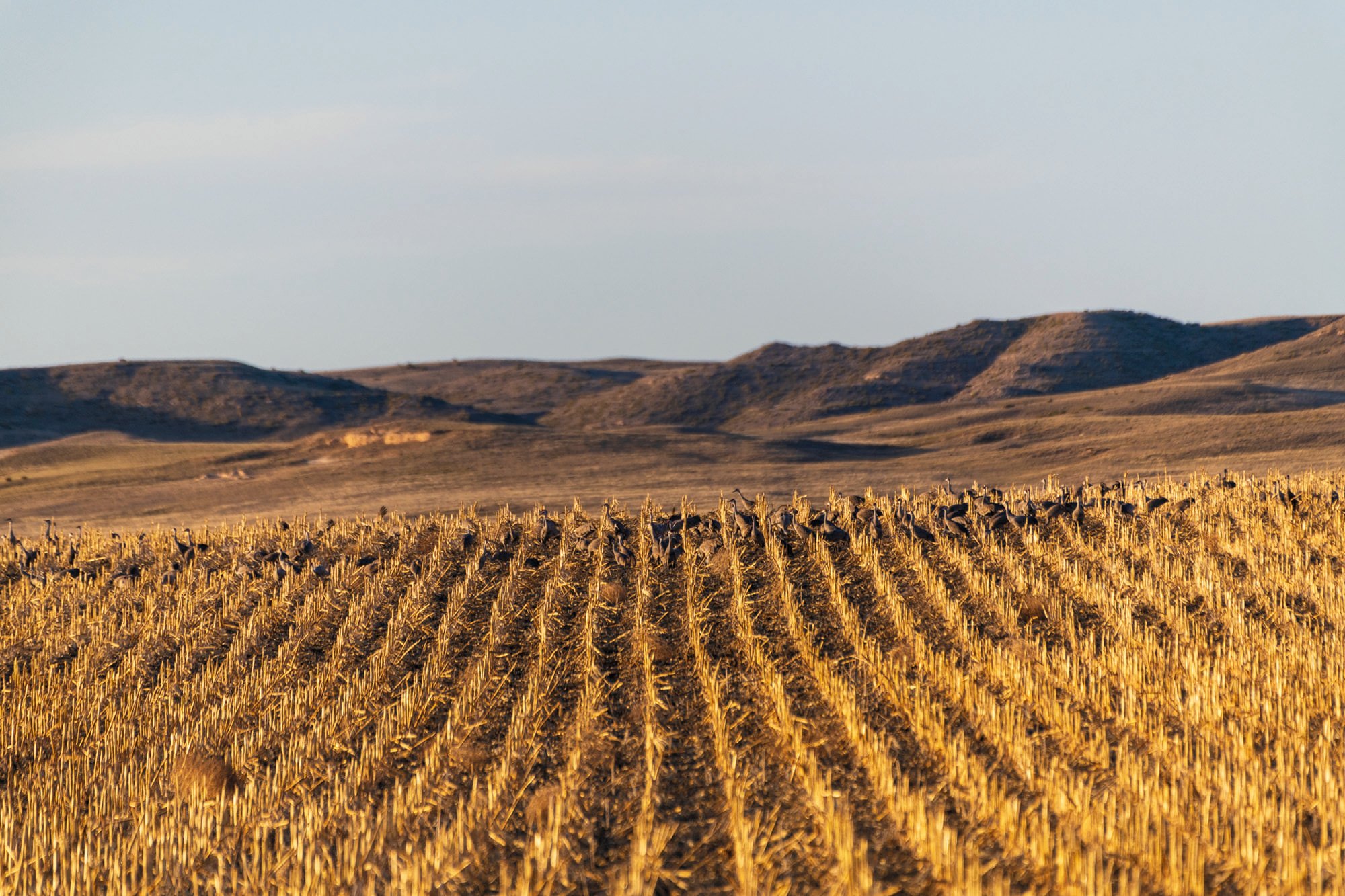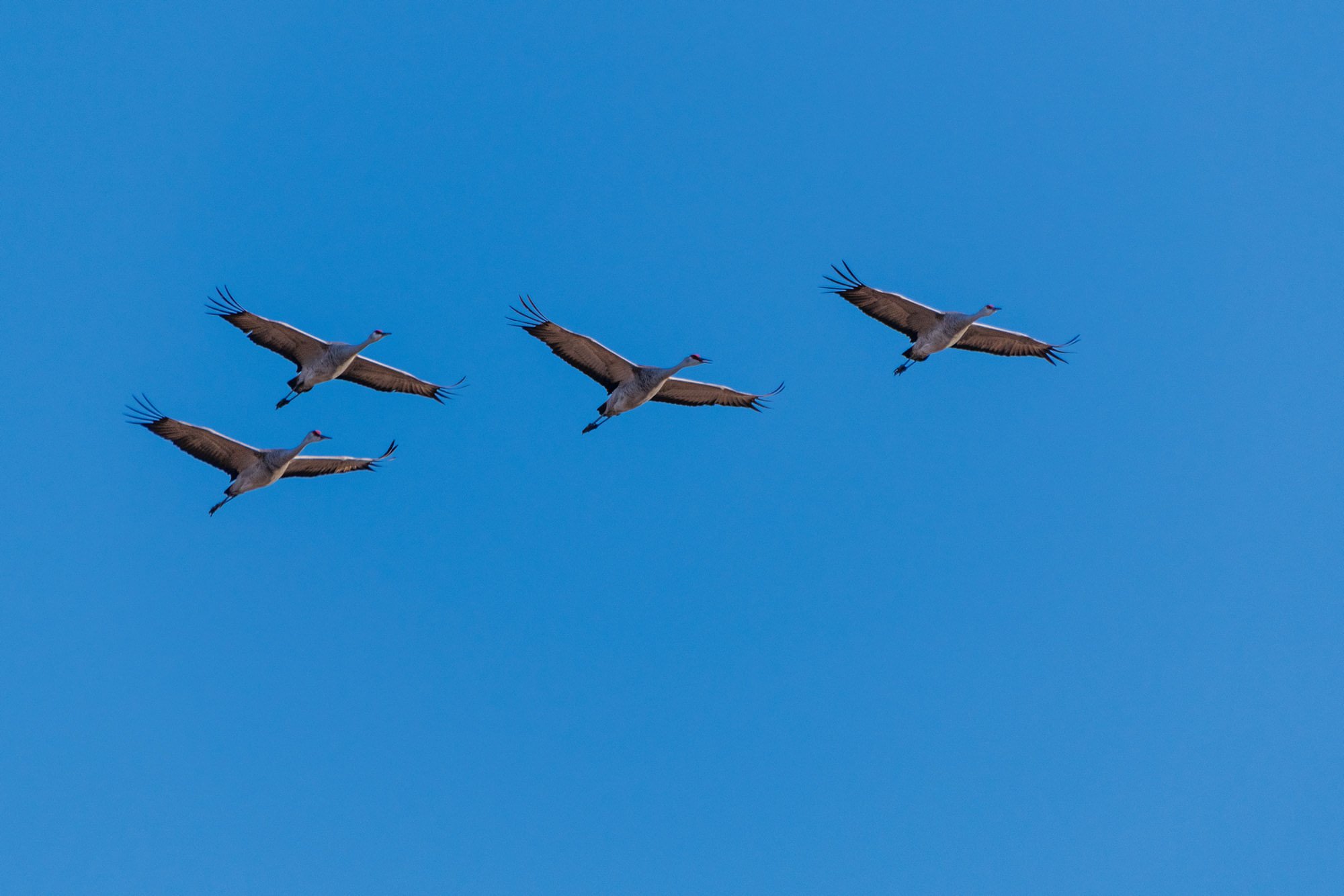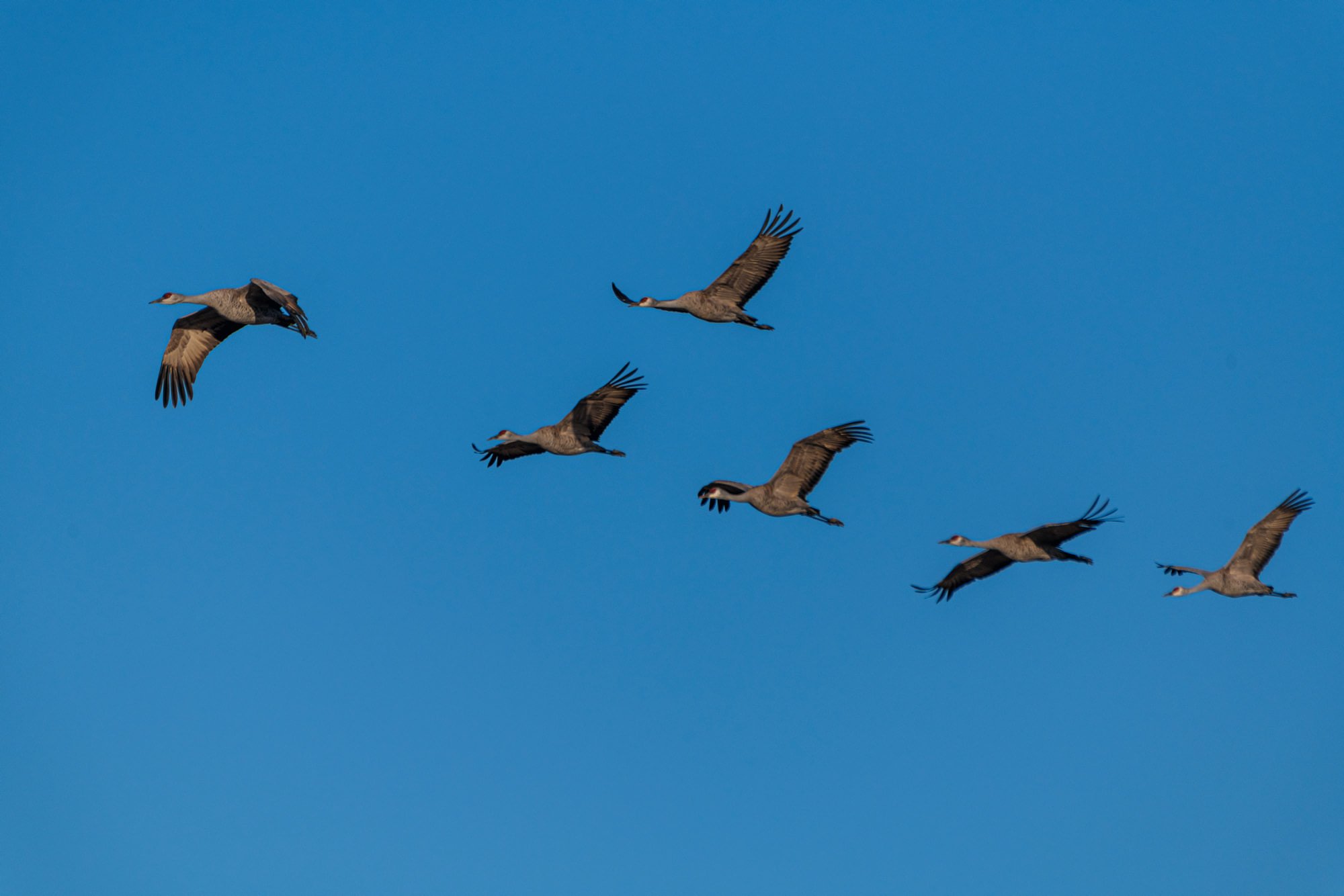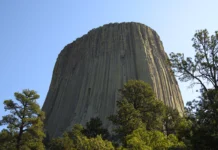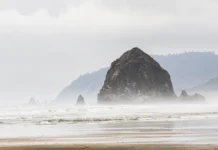| NEBRASKA |
By: Photojournalist Hawk Buckman
Each year a spectacle occurs in the Sandhills of central and, with increasing frequency, western Nebraska. Of course, we’re talking about the Sandhill crane’s annual migration, which stops to rest and feed in the heart of Nebraska..
The largest gathering of cranes happens near North Platte, Nebraska, beginning in mid-March and early April, where thousands of birds converge near the North Platte River and its tributaries. But you’re likely to see them elsewhere, mainly in fields where they journey early morning to feed on the discarded corn kernels left over from the previous year’s harvest.
The fall migration of sandhill cranes is from October into November. During the spring migration, large flocks are not witnessed due to the birds hurrying to Texas, New Mexico, Mexico, and Arizona before colder temperatures set in, overflying Nebraska and not congregating in mass. Some birds stop over in groups of ten to twenty to take a break in Nebraska, but this is only to sleep for the night, leaving in the early morning to continue their journey. Most remain aloft following the jet streams which take them south, covering hundreds of miles per day.
During the spring migration, the birds are on their way north to breeding grounds from February to mid-April, stopping in central Nebraska and following the central flyway North to the northern U.S., central Canada, western Alaska, and Siberia. But something is changing that is now affecting the bird’s migratory behavior, and we’re willing to bet you can guess what it is.
Call it what you will; climate change, global warming, rising global temperatures; the climate is the foundation of many species’ continued existence and survival, and the data science is observing regarding weather is solid and threatening to many species, including the human species.
Crops, transportation, energy consumption, medicine, and many other civilization requirements are being affected by small changes in climate, and the Sandhill Crane is not immune to these changes.
Since 2018, Scotts Bluff County, Nebraska, has witnessed an increase in the Sandhill Crane migratory population. Once small survival flocks found their way into far western Nebraska. In 2023, the Sandhill Crane population has more than quadrupled in the number of cranes occupying farmer’s fields, lakeside pastures, and the sky. Thousands of birds are arriving from every direction, descending on areas near small bodies of water and foraging in field rows for insects and discarded grain.
Sandhill Cranes
Photography by: Hawk Buckman
Though the central flyway in eastern Nebraska continues to witness the most significant population of birds, Scotts Bluff County, Nebraska, is quickly becoming a tourist attraction for the mass arrival of Sandhill cranes spawning new tourism opportunities in western Nebraska to which more and more people, including residents, are beginning to take advantage of.
Finding Sandhill cranes is relatively easy in western Nebraska. Wherever there’s a dirt road leading into the distance, toward a farmer’s field, North and northeast of the city of Scottsbluff, Nebraska, cranes are found in small groups. We’ve noticed the cranes prefer to land near and hang around, pivots in larger fields, so look for them there. Binoculars are necessary to view them from a distance as, despite their significant size, they blend into the background of tilled dirt easily.
At dusk, thousands of birds fly to a central location near Little Lake Alice, not to be confused with Big Lake Alice, which is now empty of water and a desolation of sand covering the entirety of the once beautiful lake. The cranes tend to avoid this area and prefer to gather near smaller bodies of water, though not on the water in western Nebraska, as is the norm in eastern Nebraska.
Finding Sandhill cranes
Locating the massive flocks of birds is relatively easy. If you’re visiting Scottsbluff, Nebraska, travel to Sugar Factory Road from Highway 26, going north until reaching Lake Minatare Road. Turn east (right) and travel about 2 miles until you reach CR 26. Turn North onto the dirt road. Ensure your windows are up due to the dust your vehicle will kick up, and avoid saturating your interior with dirt. Continue North until you see flock after flock of birds flying in one direction. Follow them. You’ll soon arrive at the location they’ve chosen to overnight. As the birds jostle and arrange themselves into a hierarchy, more flocks will simultaneously come from the horizon, from every direction, in mass.
| MORE INFORMATION
The Nature Conservancy



